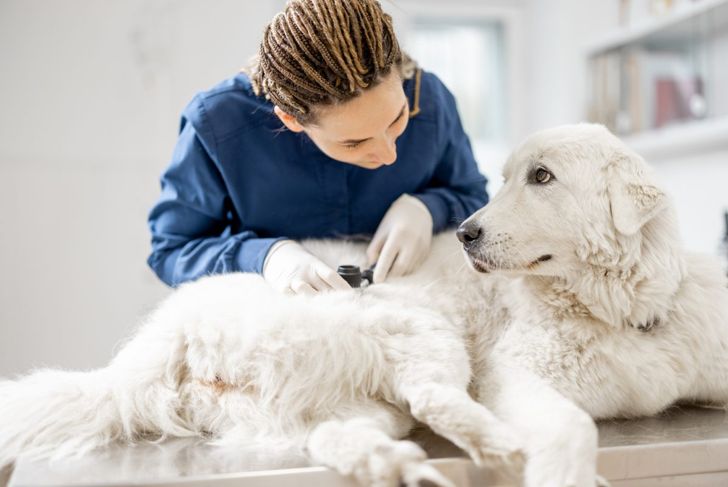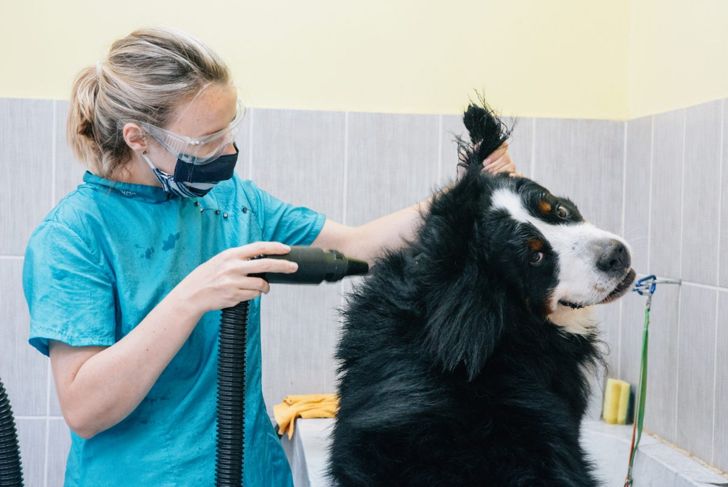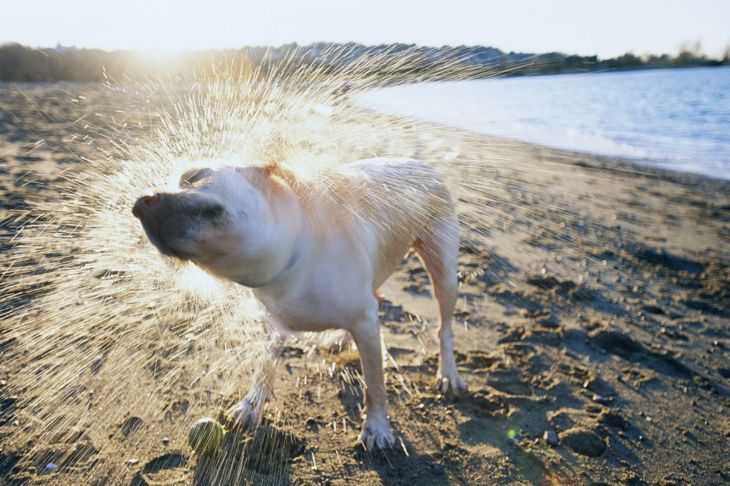Skin tags usually appear as small, skin-colored growths. They can occur anywhere on the body, but they most often happen in clusters around the head and neck, armpits, or groin. New growths can be cause for worry, especially on your aging dog. However, there’s no need to panic about skin tags because they aren’t sinister. These growths are common and usually harmless and benign.
What are skin tags?
Skin tags are small growths that form due to a fibrous strand growing inside the skin. They can be as large as a grain of rice and are usually found on the neck, armpits, or groin. Skin tags, especially looser ones with stalks, are somewhat similar to moles in appearance. They are common and often go away on their own. But skin tags can become infected with bacteria or cause irritation. Early detection and treatment can help keep skin tags from becoming any more problematic.
Different types of skin tags on dogs
Generally, there are two different types of skin tags on dogs: fibroadnexal hamartomas and follicular hamartomas. Both types are benign, but the nature of each can vary slightly. Follicular hamartomas look flat and are more common with thick fur. Most skin tags on dogs are fibroadnexal hamartomas, also known as collagenous hamartomas that develop in those crevices that rub together. They are hairless growths and often seen in a single spot.
Skin tags come in different shapes, sizes, and textures
The texture of a skin tag can also vary from smooth to rough, soft or hard. Some skin tags on dogs can be tender and inflamed. You may notice redness around some growths, while others might bleed from being cleaned or groomed. Sometimes a dog has more than one skin tag at the same time. Most dogs will develop one or two skin tags throughout their lifetime, but it’s common for some breeds to have them more often than others.
Causes of skin tags in dogs
You might want to know what caused your dog’s skin tags if they are a new occurrence. It might be helpful to think about any recent changes in your dog’s lifestyle or environment. Skin tags are so common that dogs can get them for reasons unrelated to any underlying medical issue. Some of the most common causes of skin tags include friction, where skin rubs together, moisture and heat. Genetics also plays a role in which animals are more likely to have skin tags.
Larger dog breeds are more susceptible to skin tags
Many dog breeds are more prone to skin tags than others. Labs, bulldogs, and golden retrievers tend to get more skin tags than other pets as larger breeds grow skin tags more often. Like humans, skin tags become more common as pets age. It is also more prevalent in overweight dogs because of the extra skin around the neck and armpits. A few small skin tags are most likely harmless. If they are painful or seem to be getting worse, you may want to schedule an appointment with your veterinarian.
Steps veterinarians take to diagnose skin tags
At the vet’s office, your dog will most likely be given a thorough exam. This starts with a full-body inspection to look at any growths. Your veterinarian will also pay attention to the texture of your dog’s skin and how the growths appear. The doctor may feel around for sore spots or listen for any unusual sounds coming from the bumps on your dog’s body. It is important that vets know what kind of skin tags they are dealing with to provide proper treatment.
Skin tags are normally benign
As a dog ages, they’re likely to develop skin tags. This is because skin rubs against various objects as he gets older, leading to these growths. These tags can start small, and then they may continue to grow into the bumpy and irregular growths that you see in dogs. It’s important to realize that skin tags are not harmful in any way as long as they are not infected.
Removing skin tags with surgery
Your veterinarian may choose to recommend removing skin tags surgically. This is usually recommended if the growths are unsightly, seem to be increasing in size, or cause your dog discomfort. In some cases, your veterinarian might tell you to place a bandage over the skin tag to prevent more growths from forming.
Removing skin tags with cryosurgery
Some small skin tags don’t cause any irritation or discomfort, so your veterinarian might recommend removing them with cryosurgery. This involves freezing them with an ice pack and removing them with a scalpel. This procedure is recommended if the skin tags are right over sensitive areas on your dog’s body, such as his eyes, ears, nose, mouth, or genitals. It’s always a good idea to keep an eye on these growths, whether they are small or large.
Skin tags often grow back
While skin tags are benign growths, the removal process is often only temporary. Skin tags will often grow back. This is why many vets will consider the procedure cosmetic in nature. Even once the skin tag has been removed, your vet should regularly check your dog’s skin. In most cases, skin tags on dogs can be removed successfully. However, it’s always possible for your dog to grow new skin tags as it ages.

 Home
Home Health
Health Diet & Nutrition
Diet & Nutrition Living Well
Living Well More
More



















